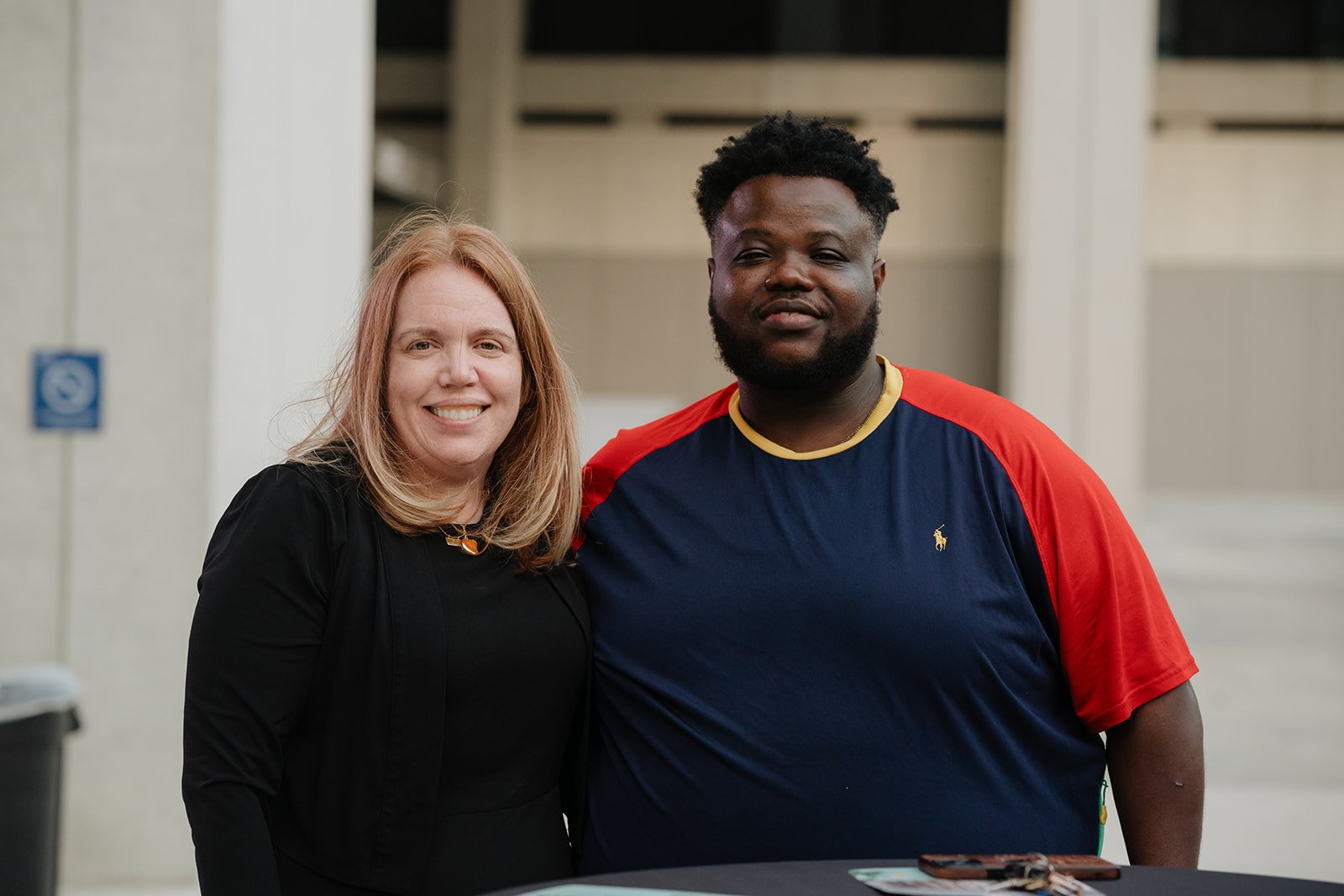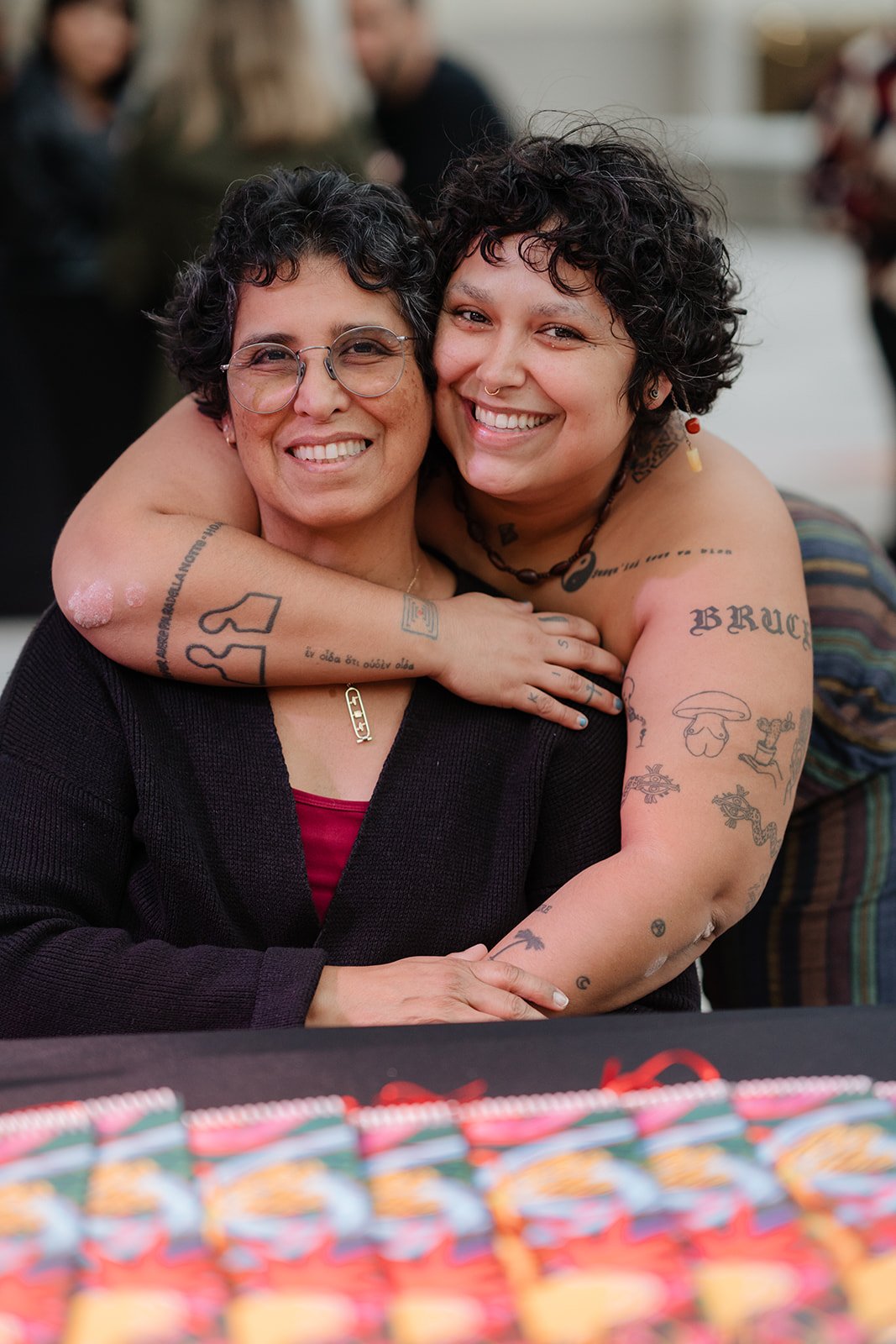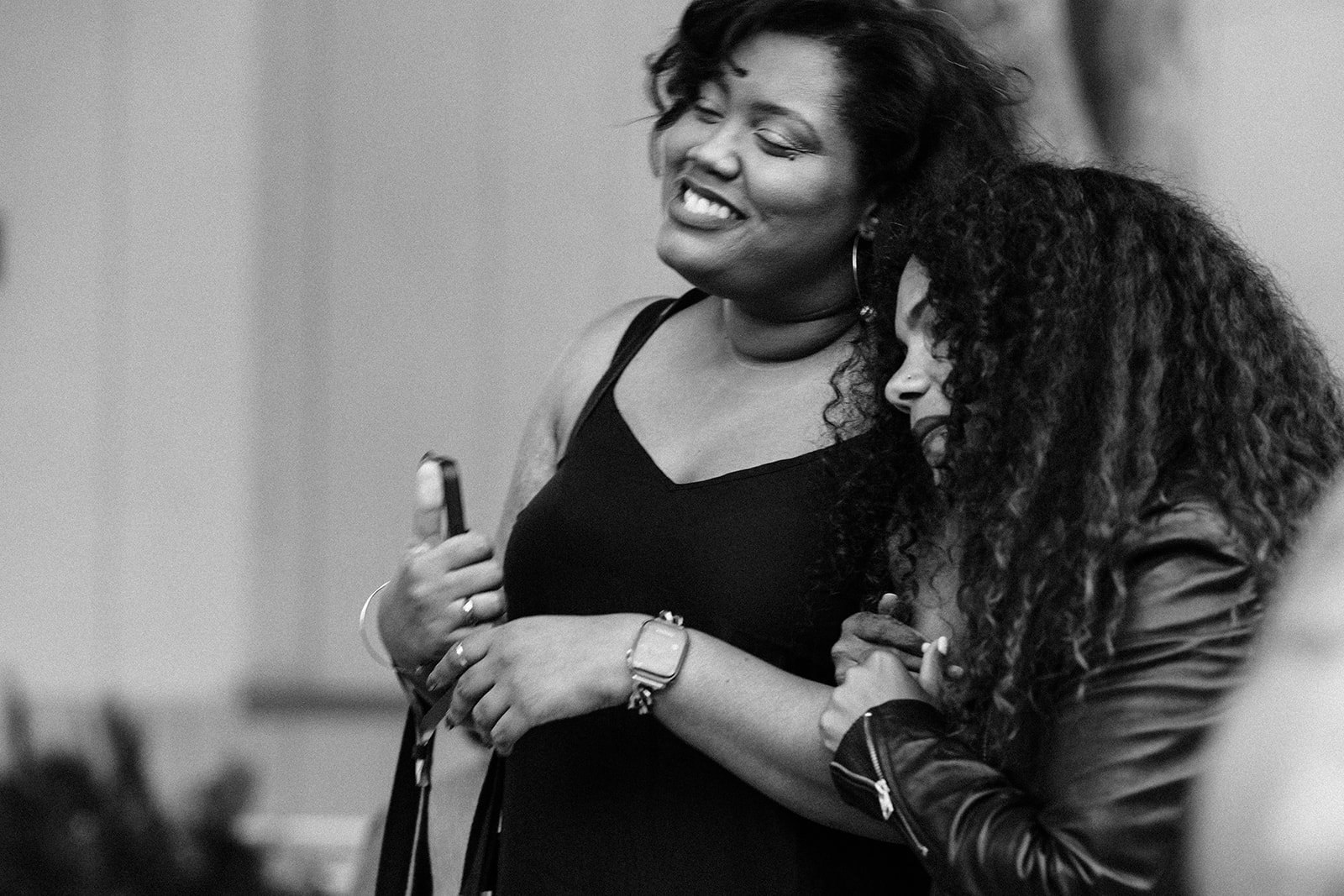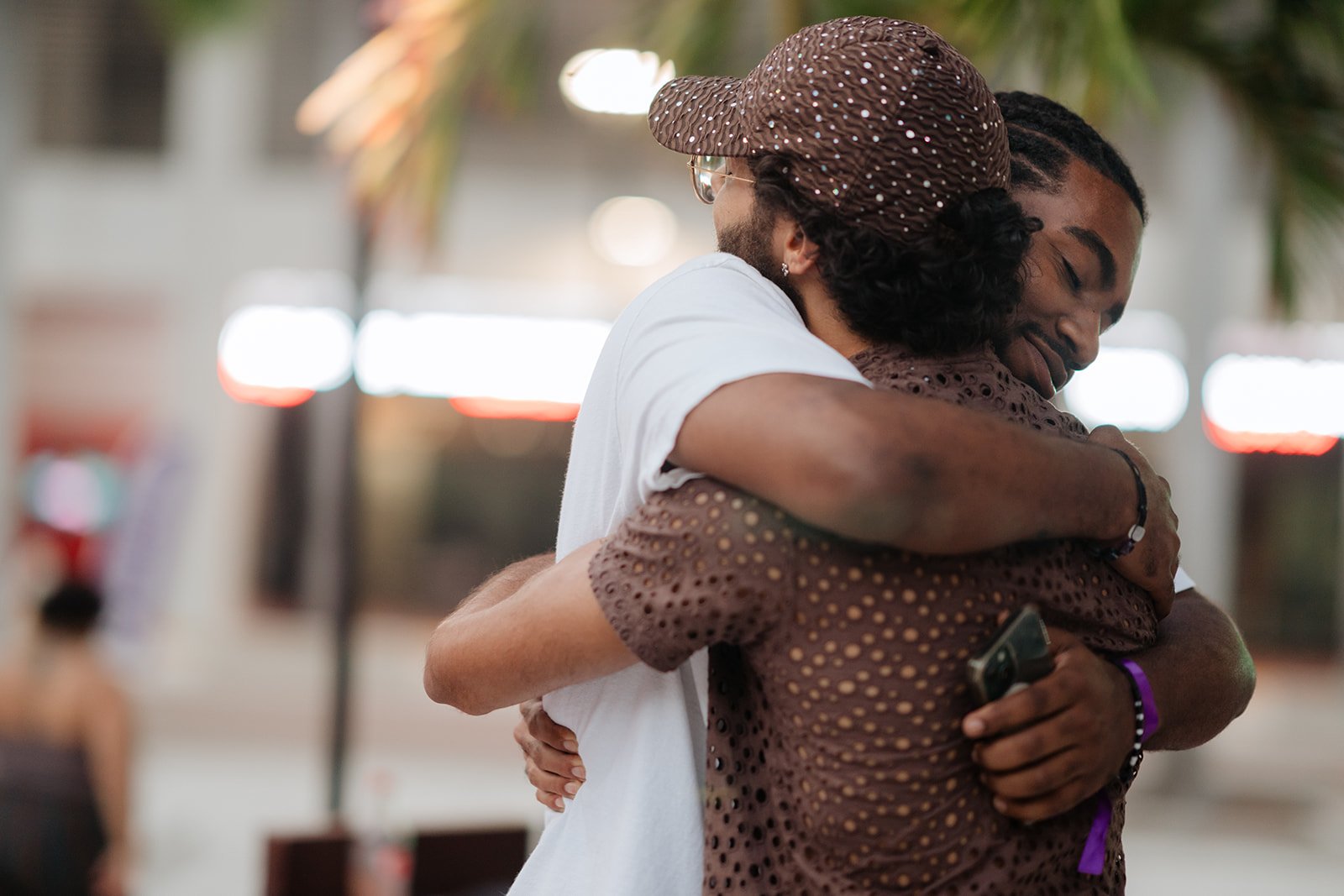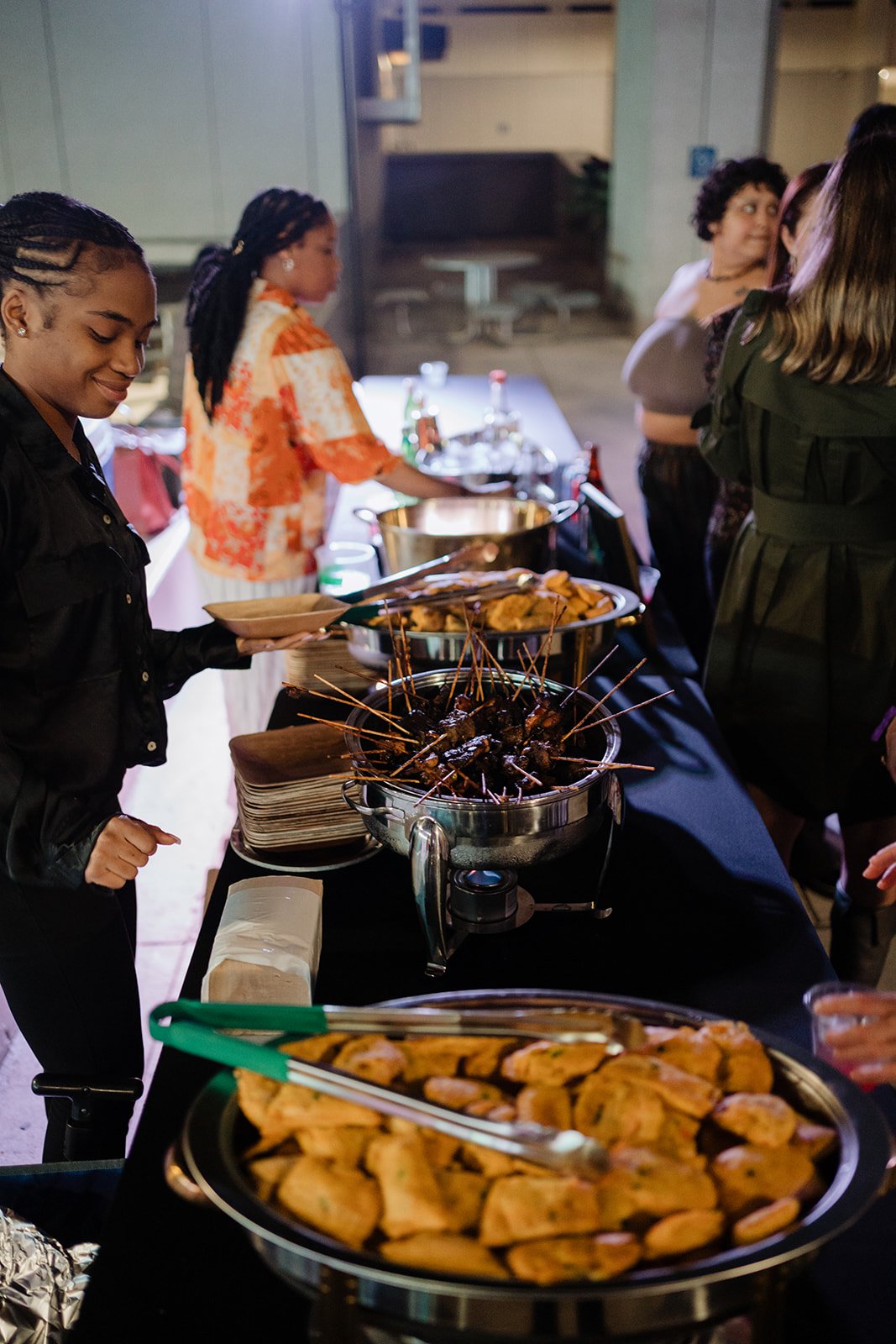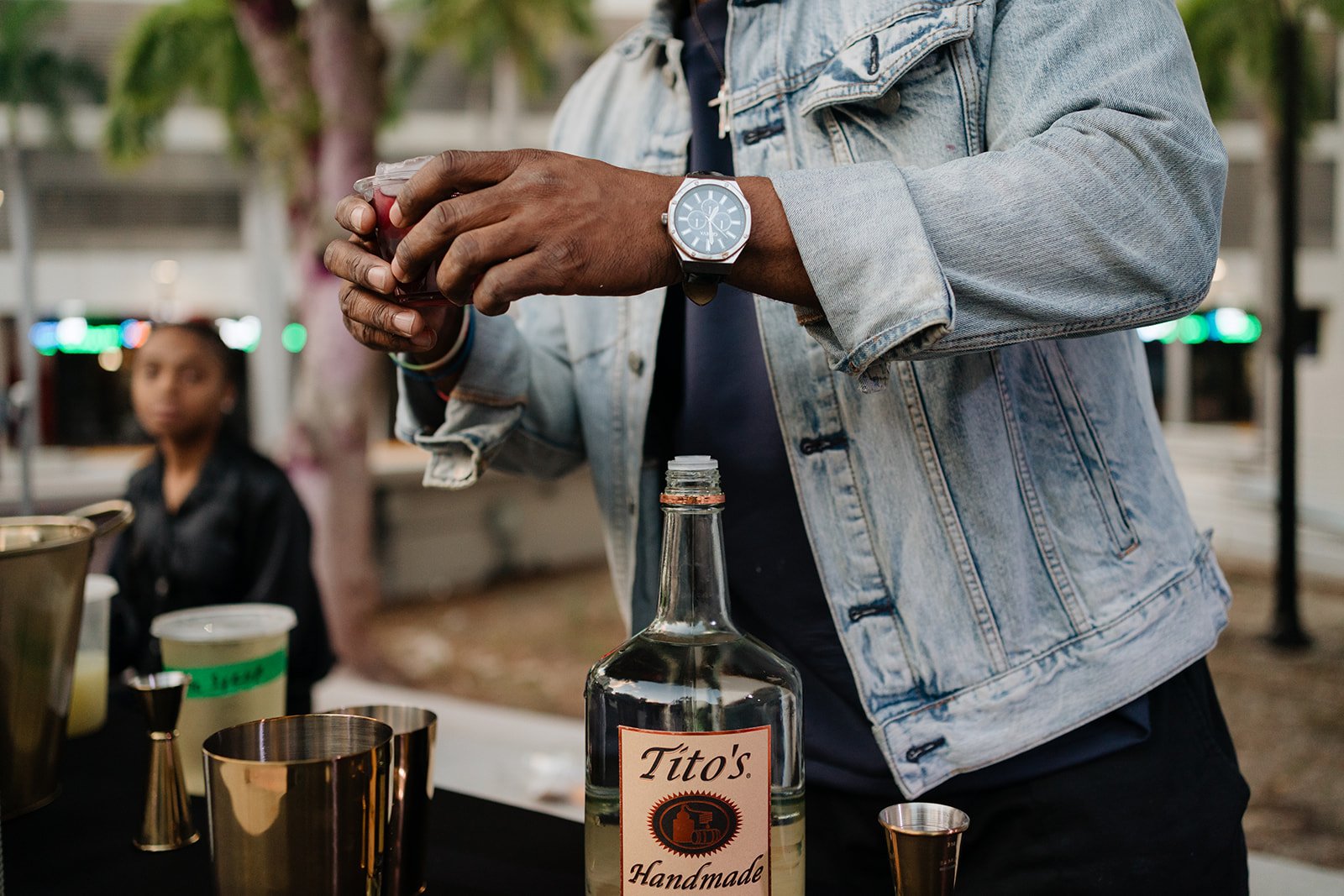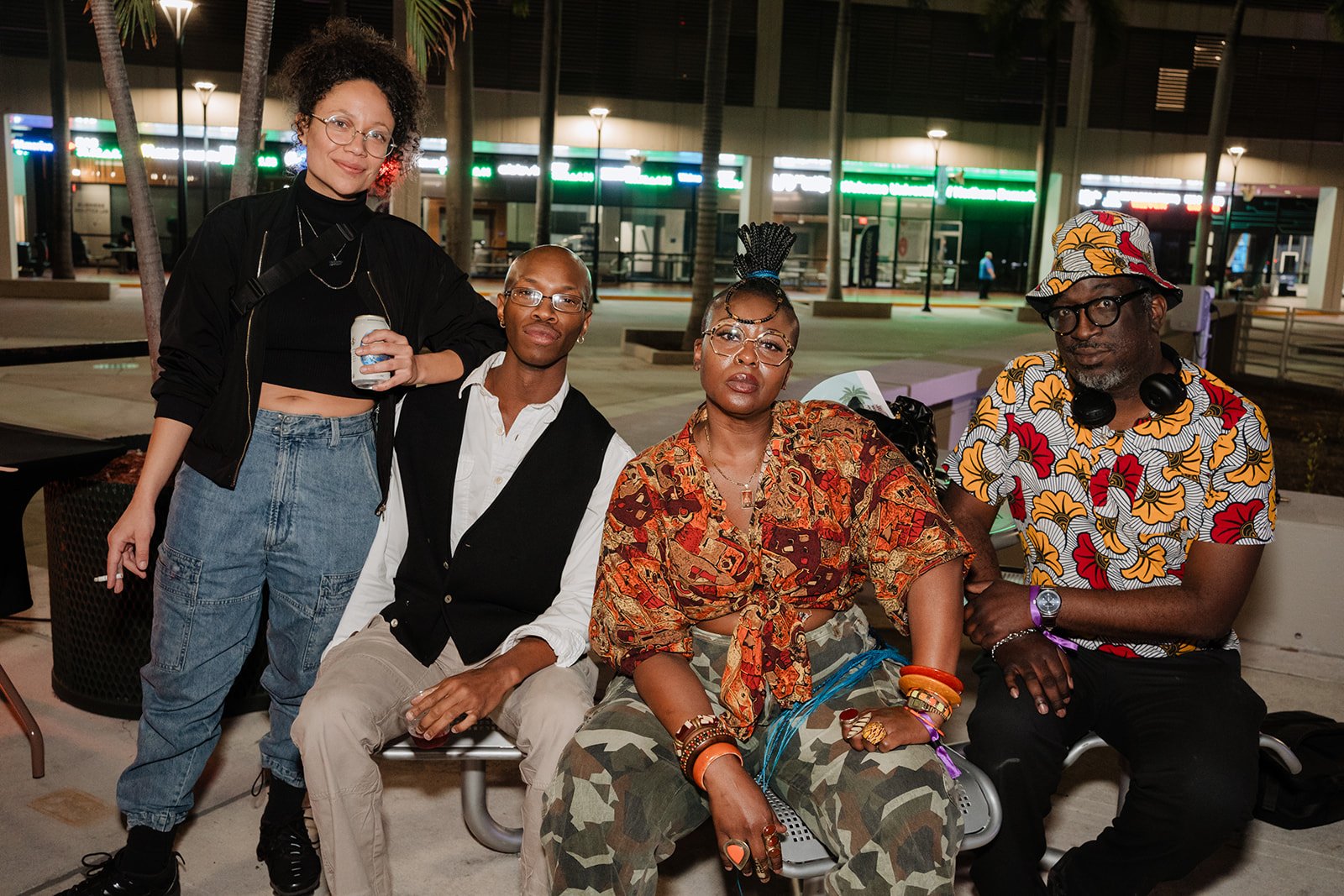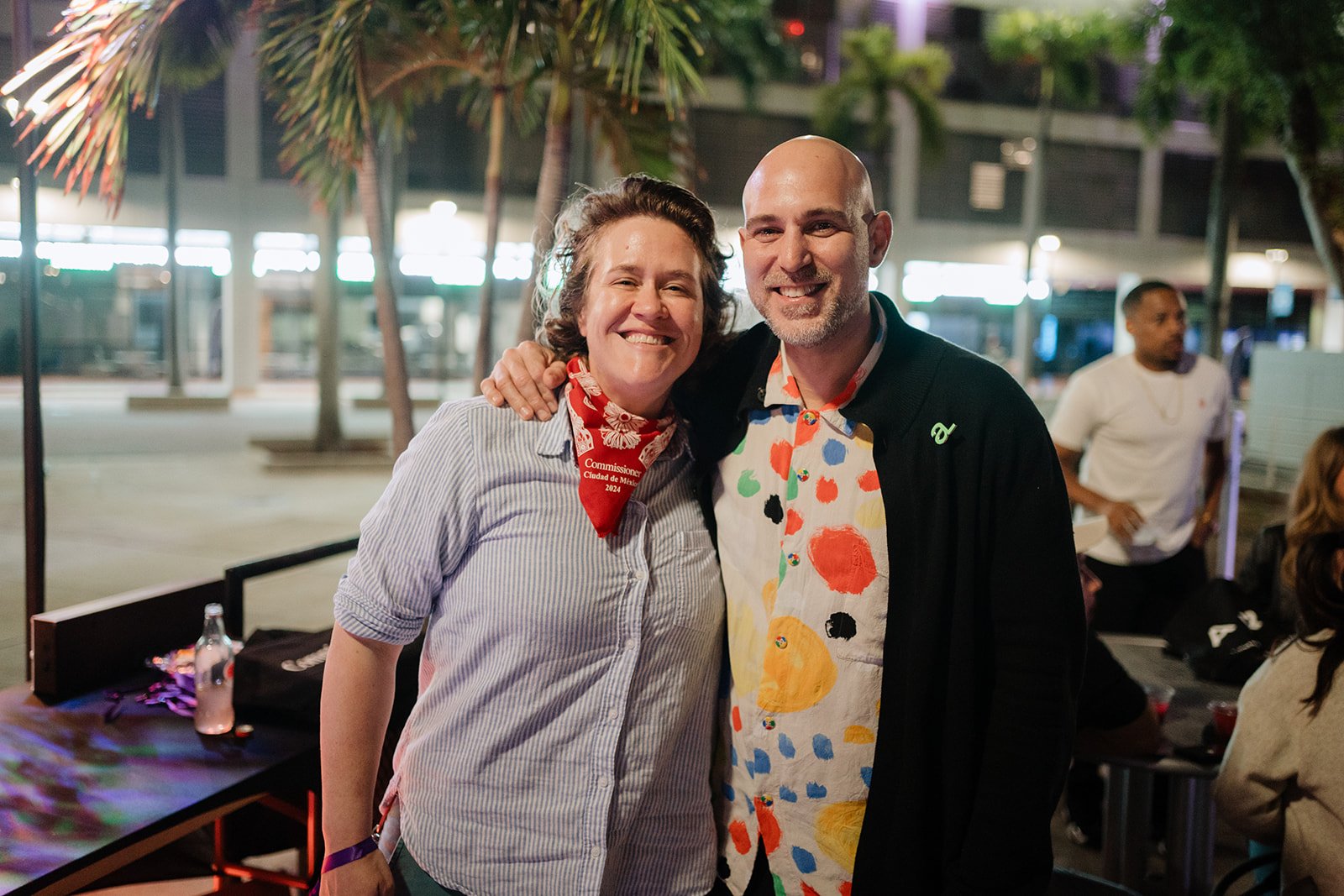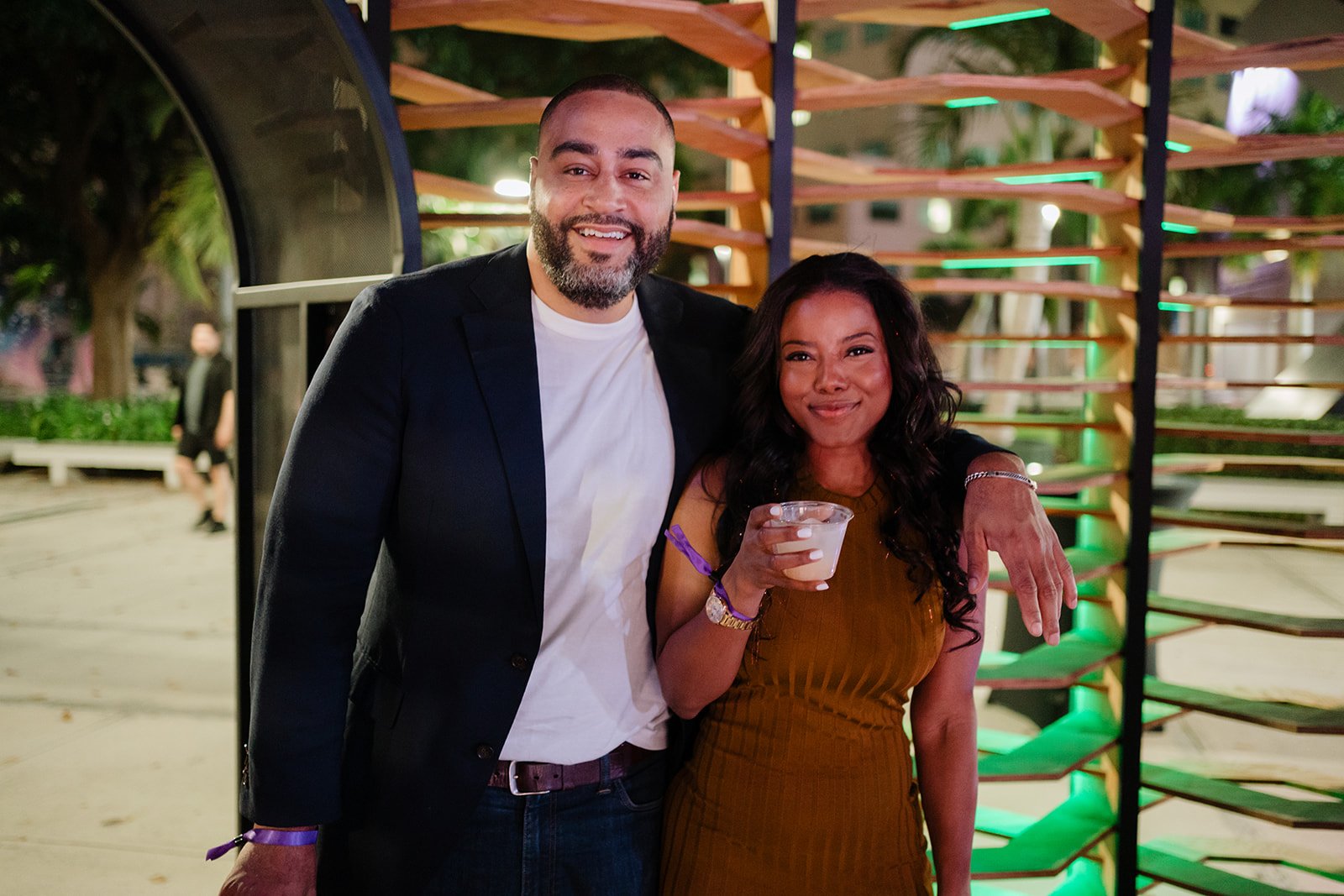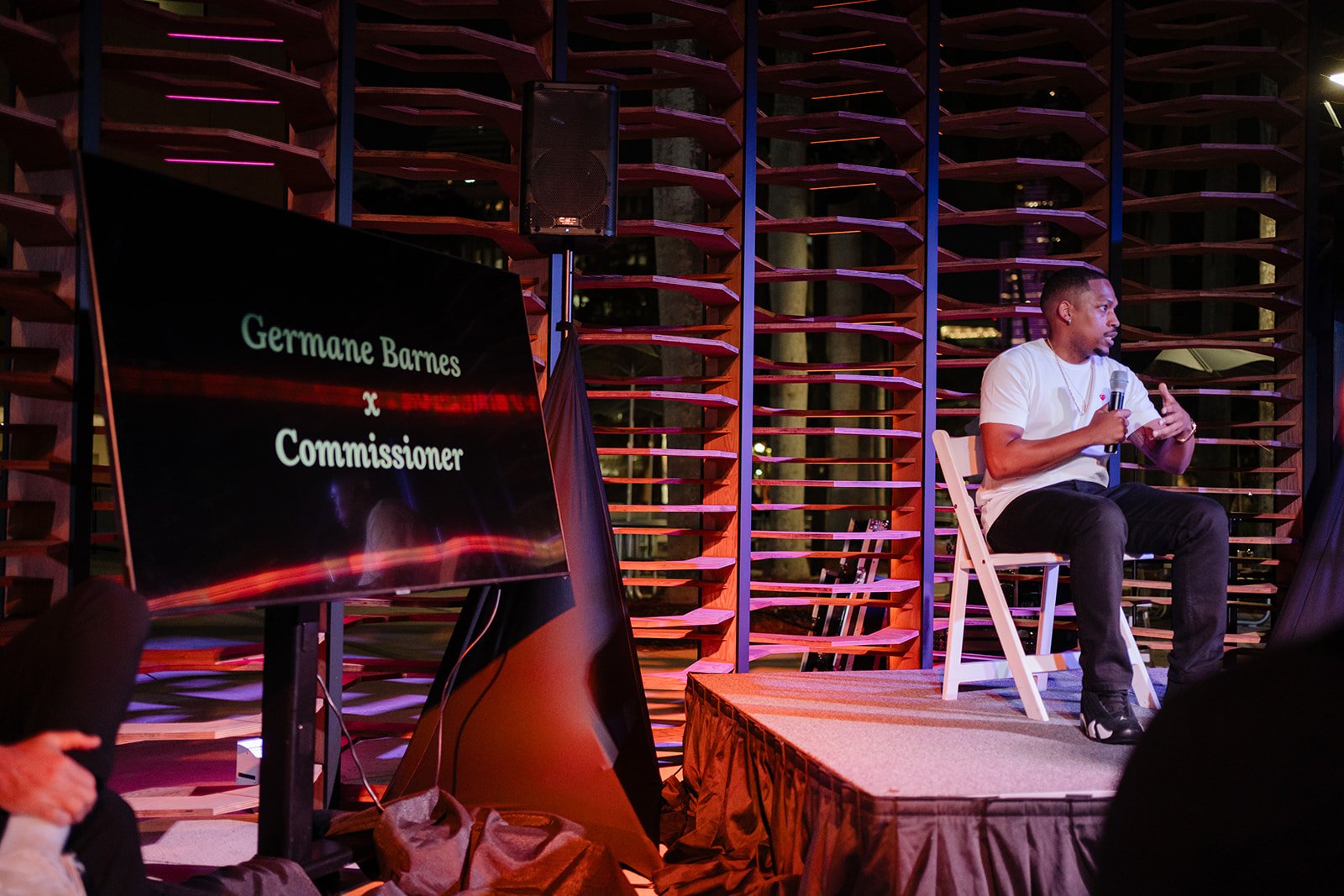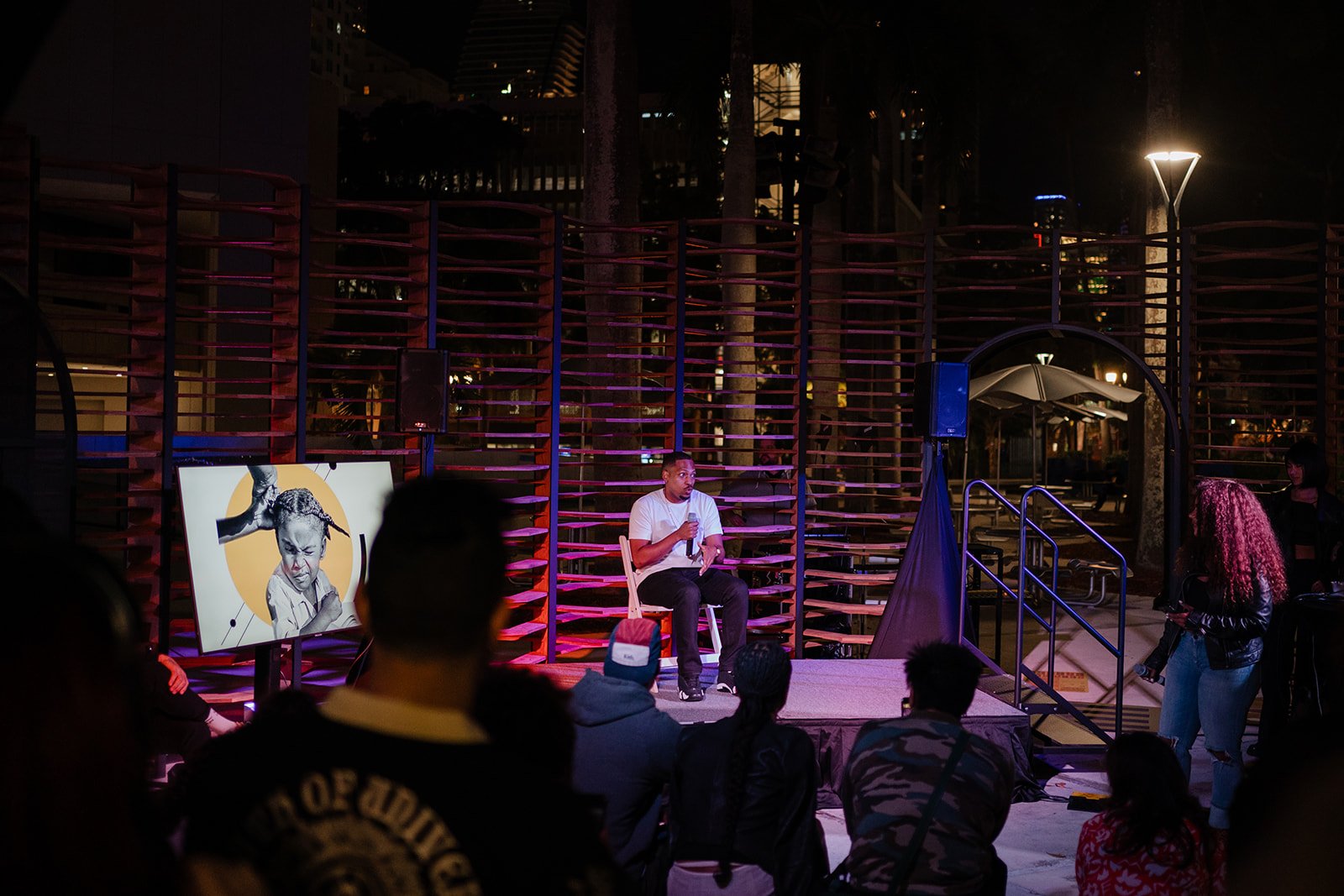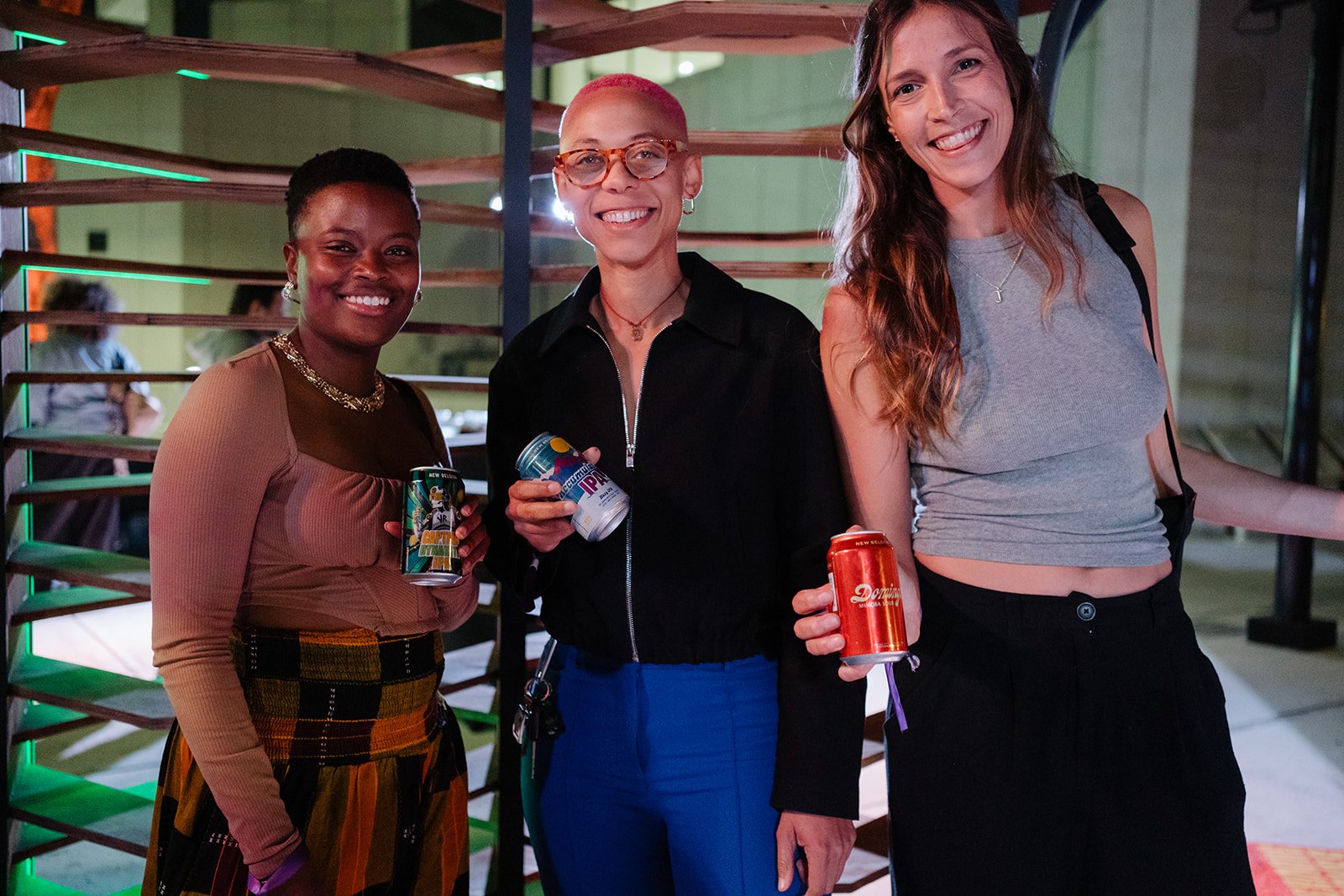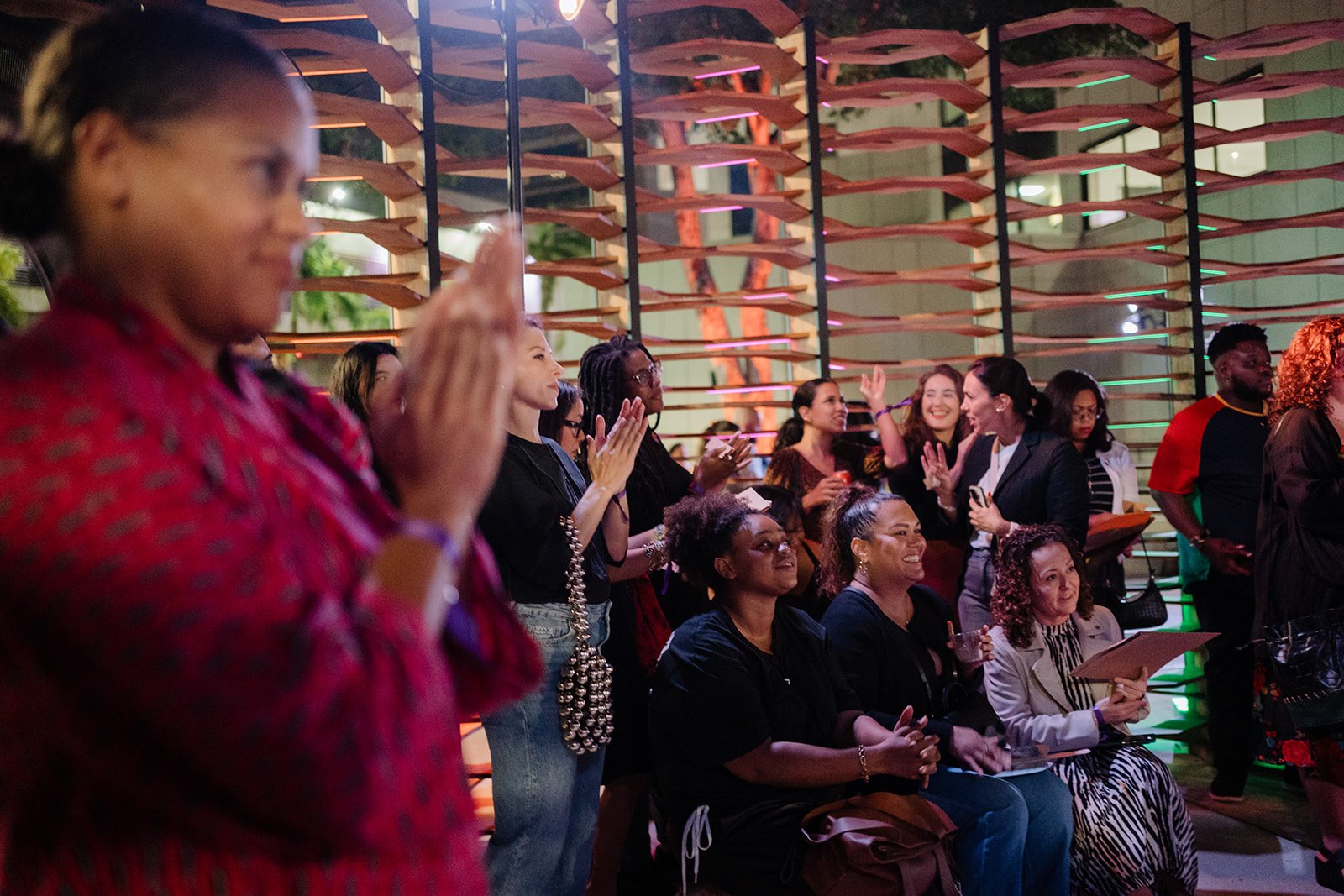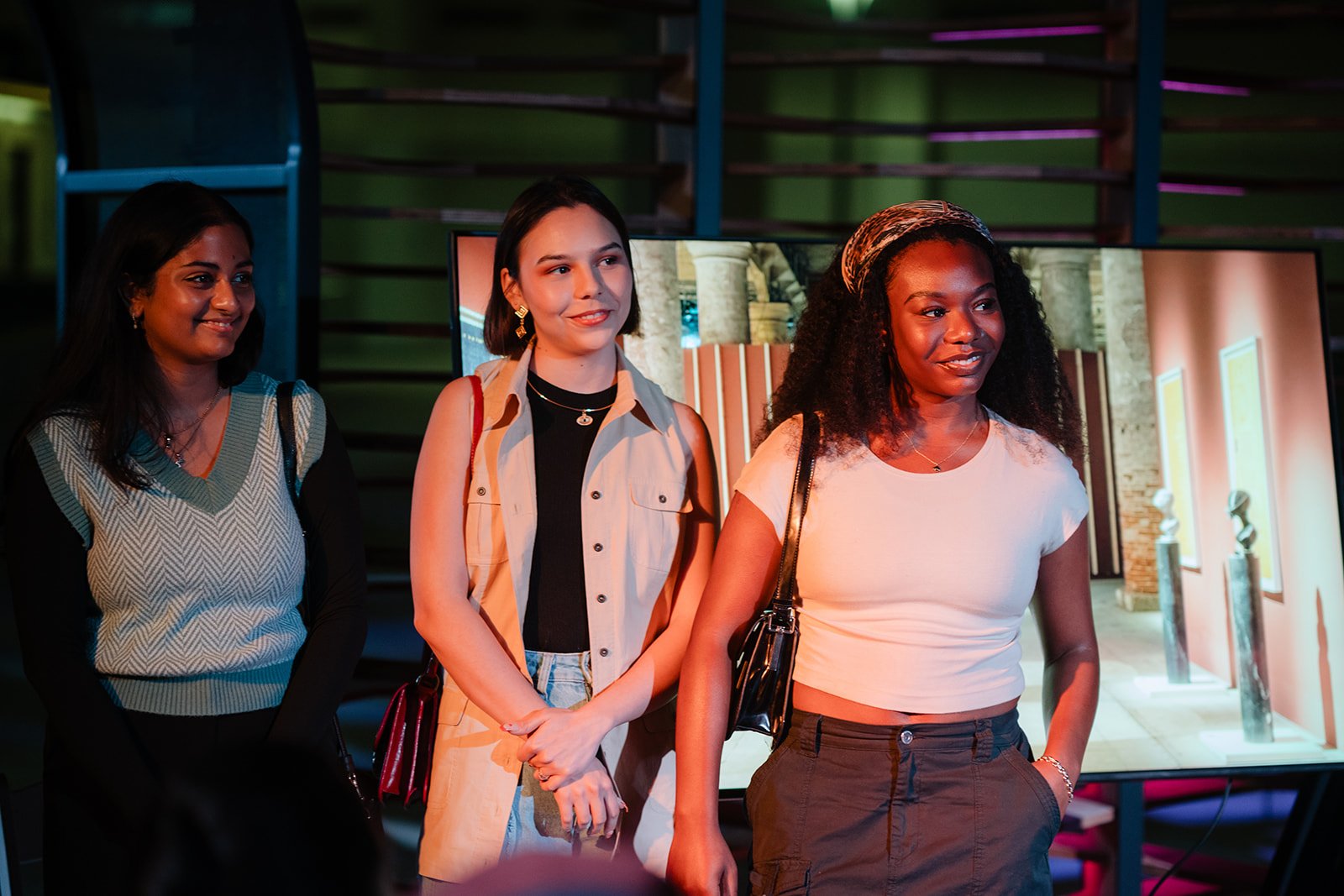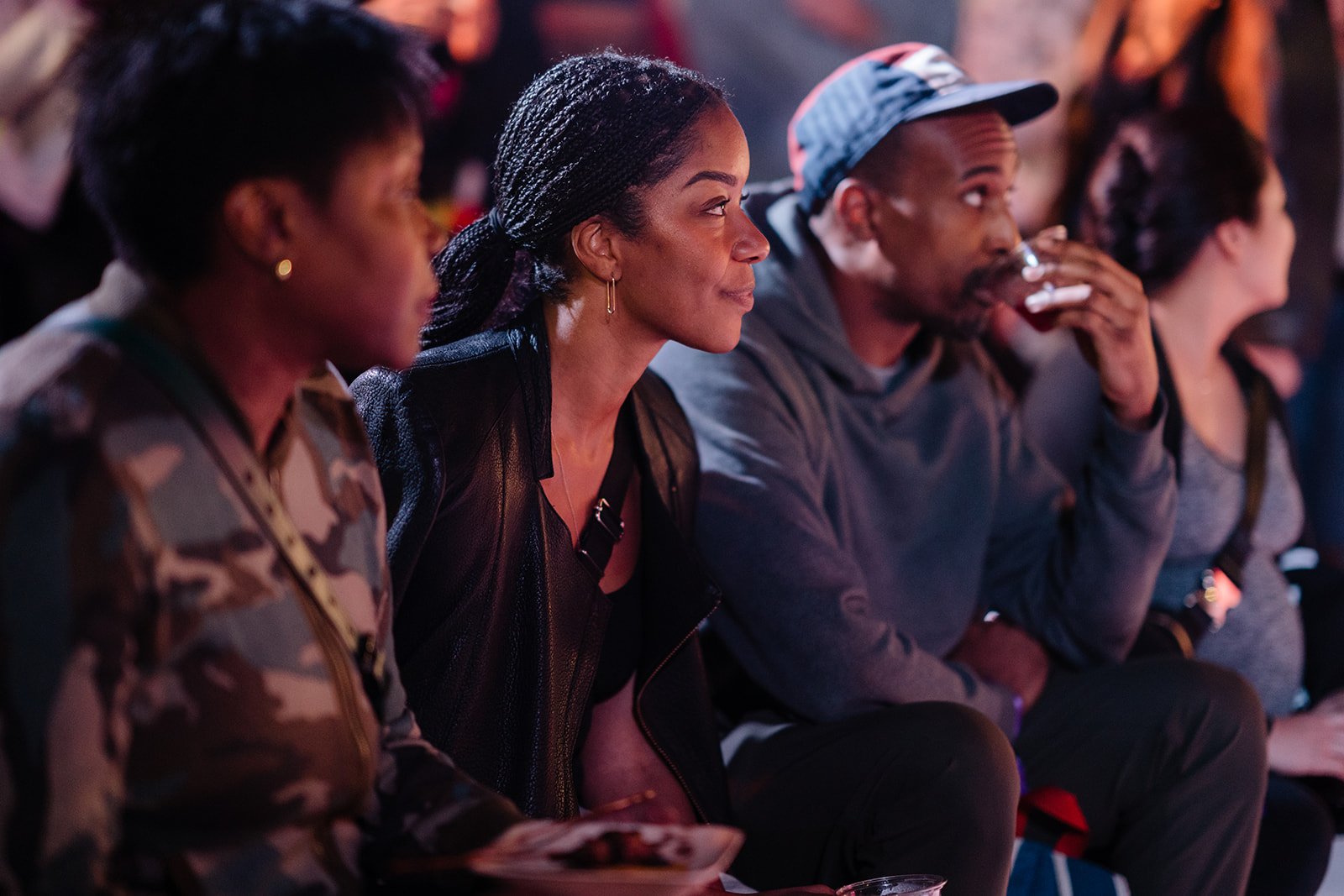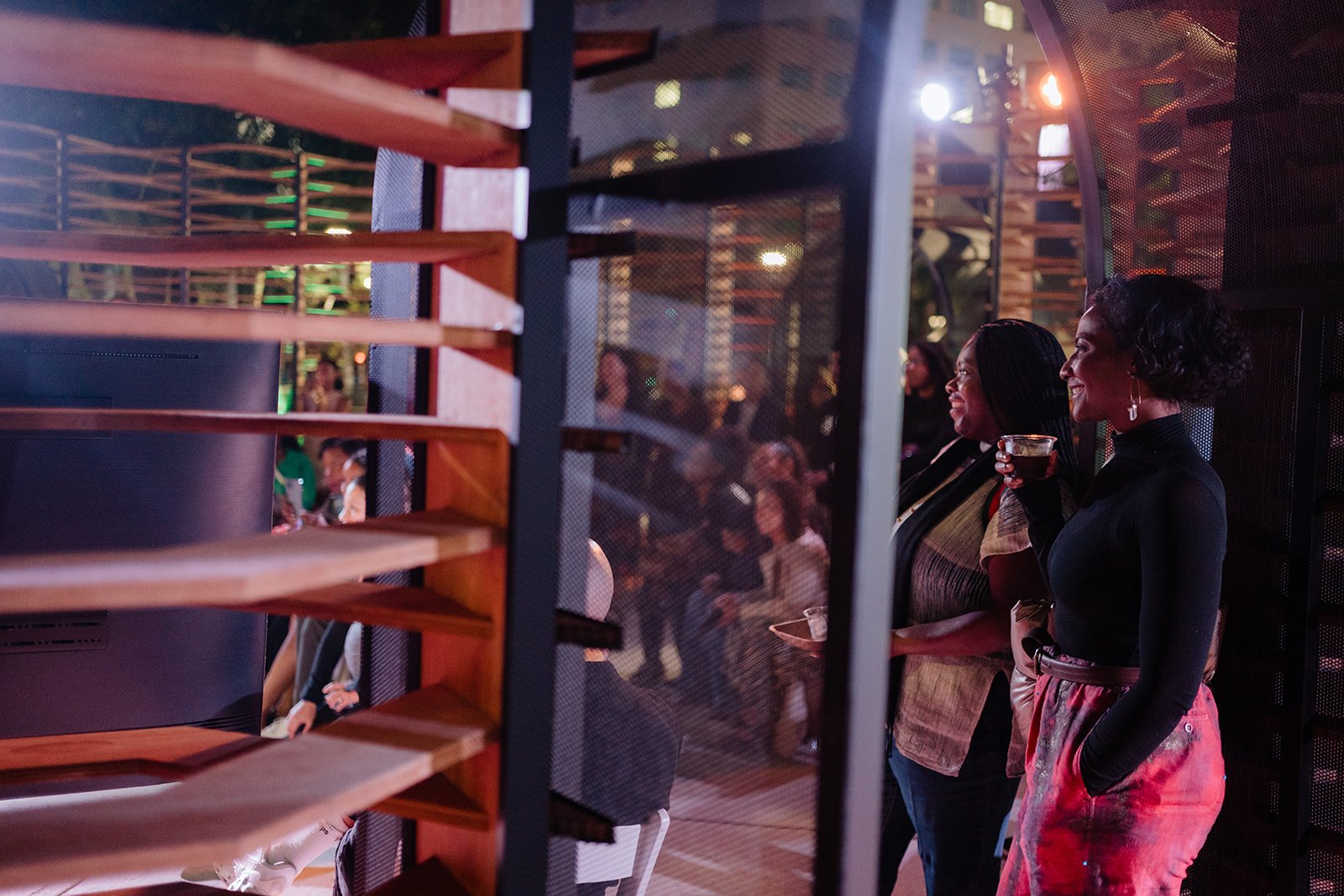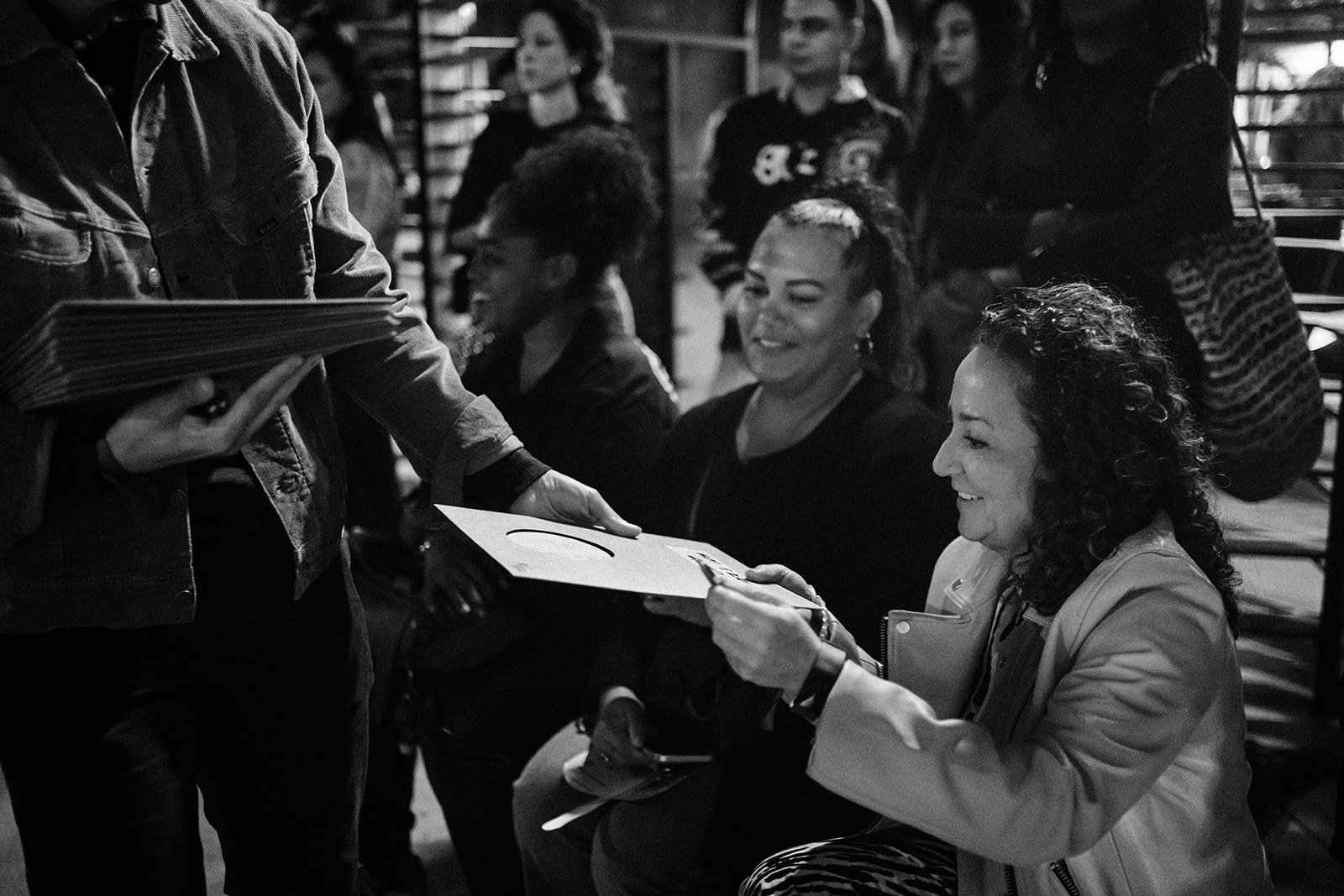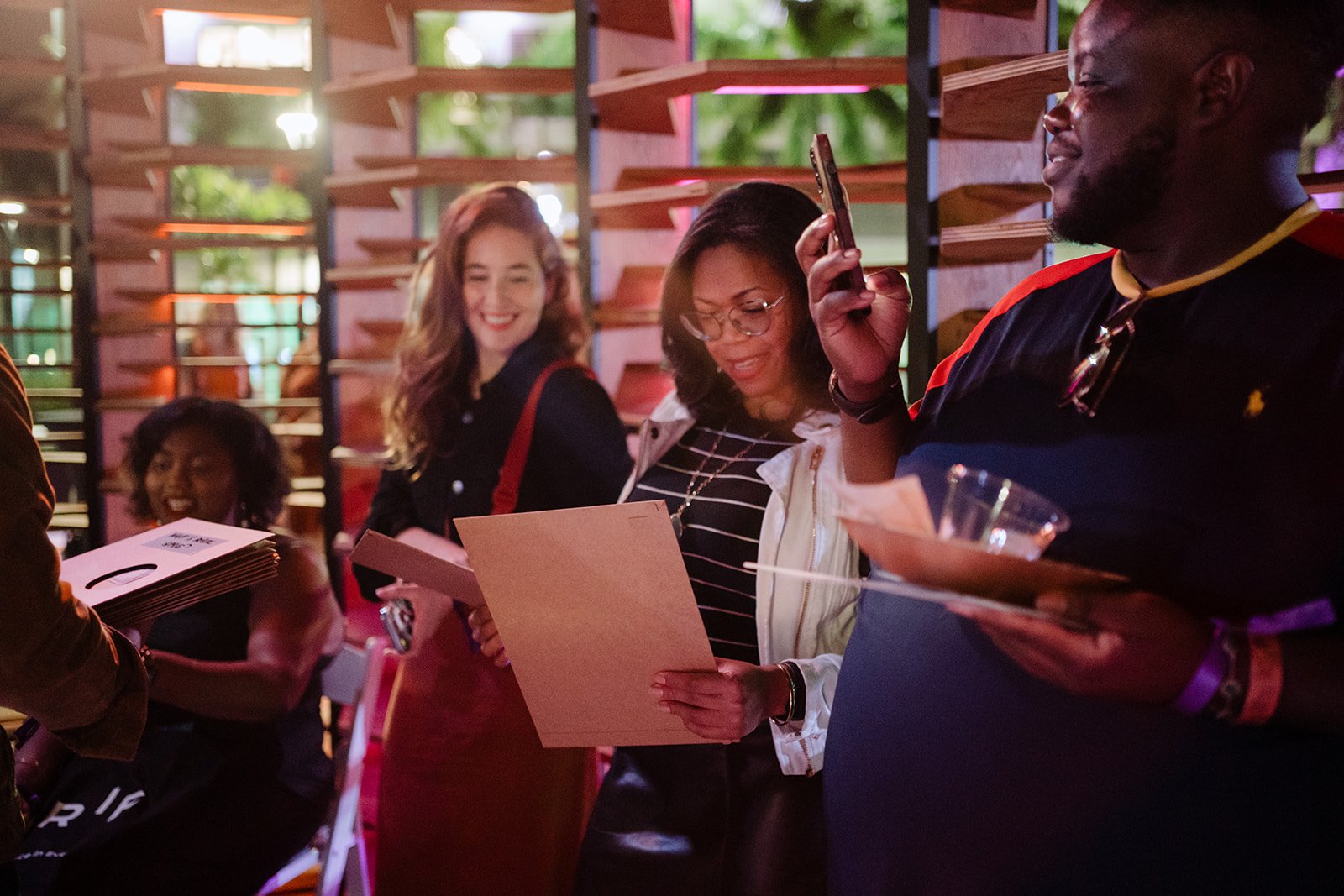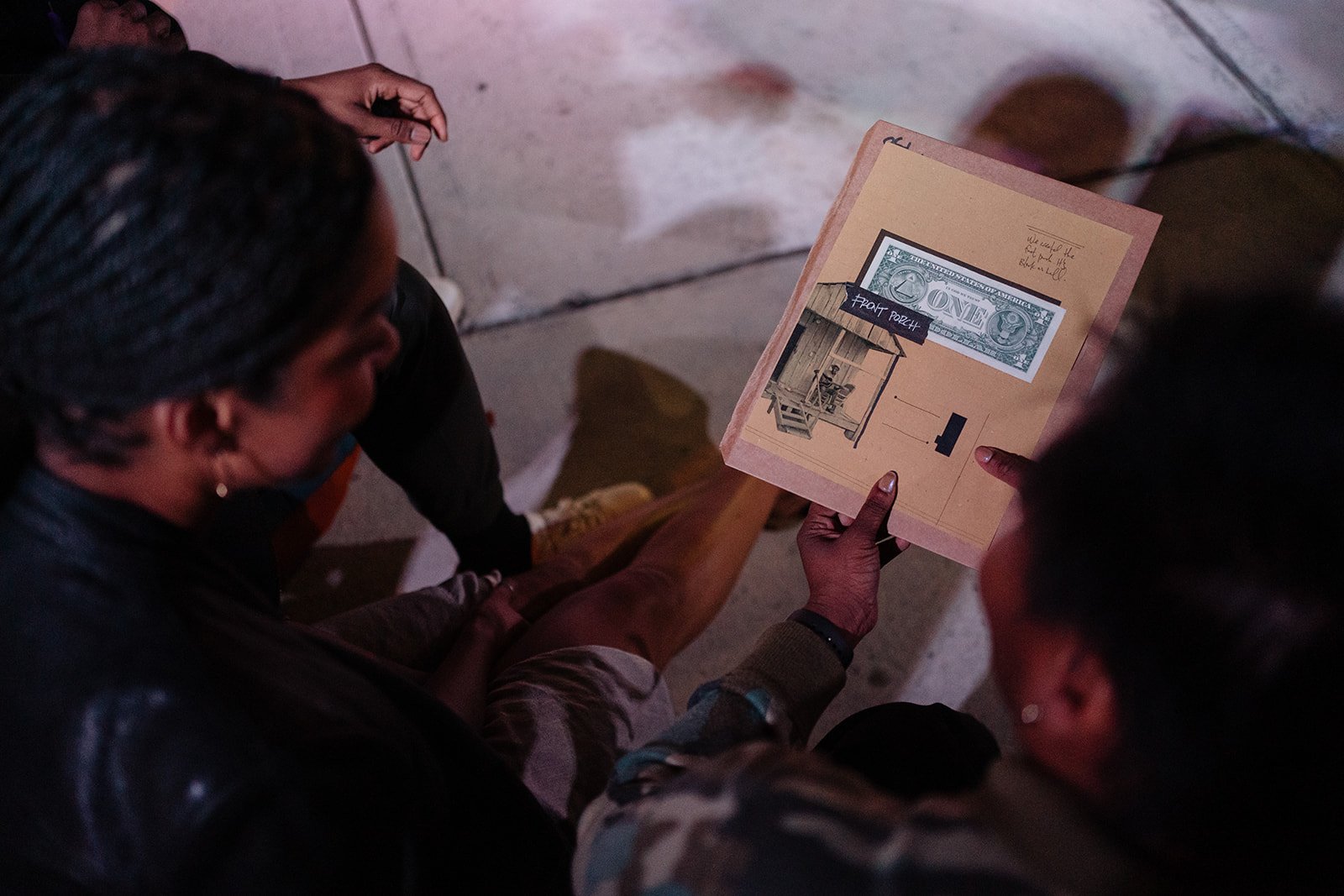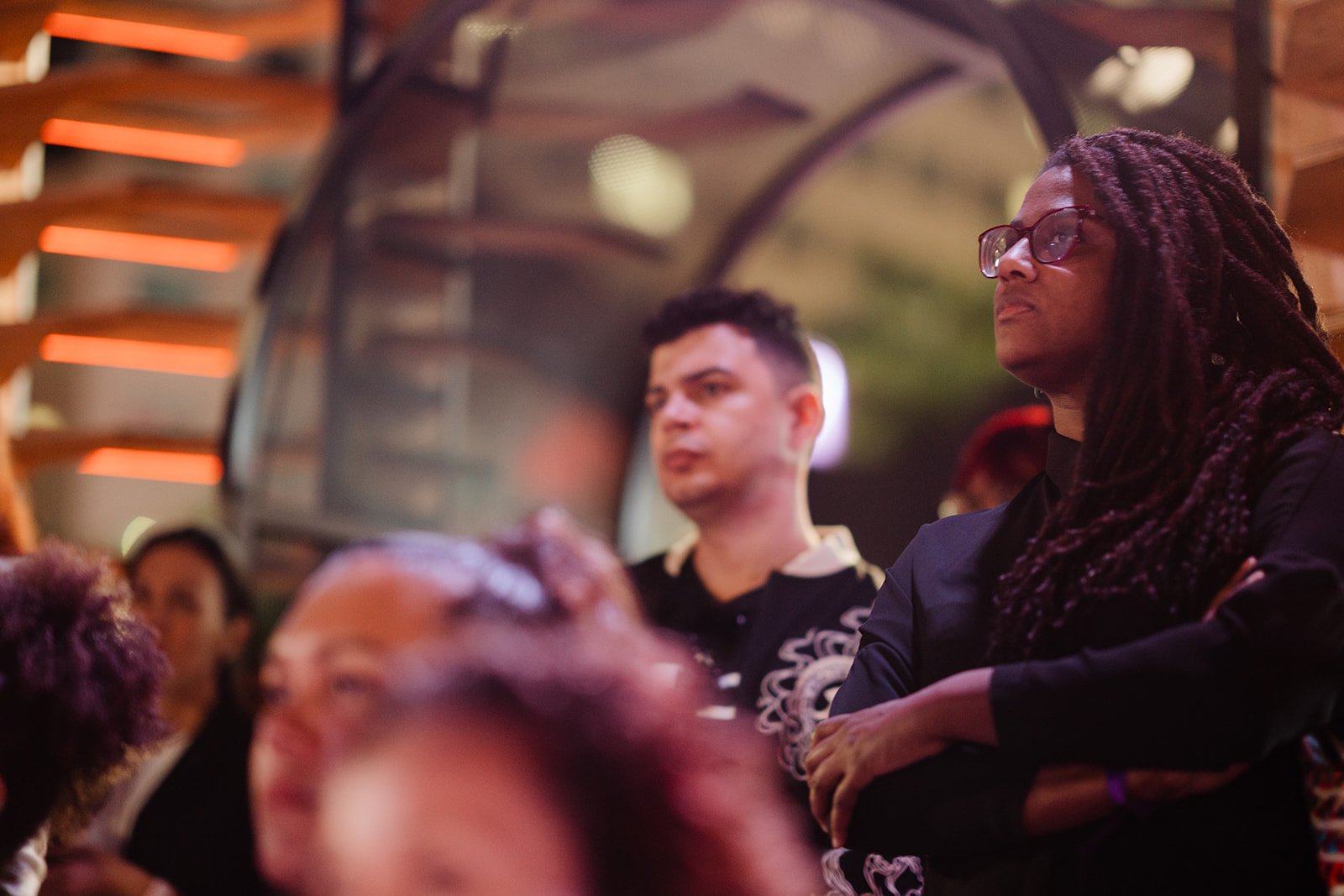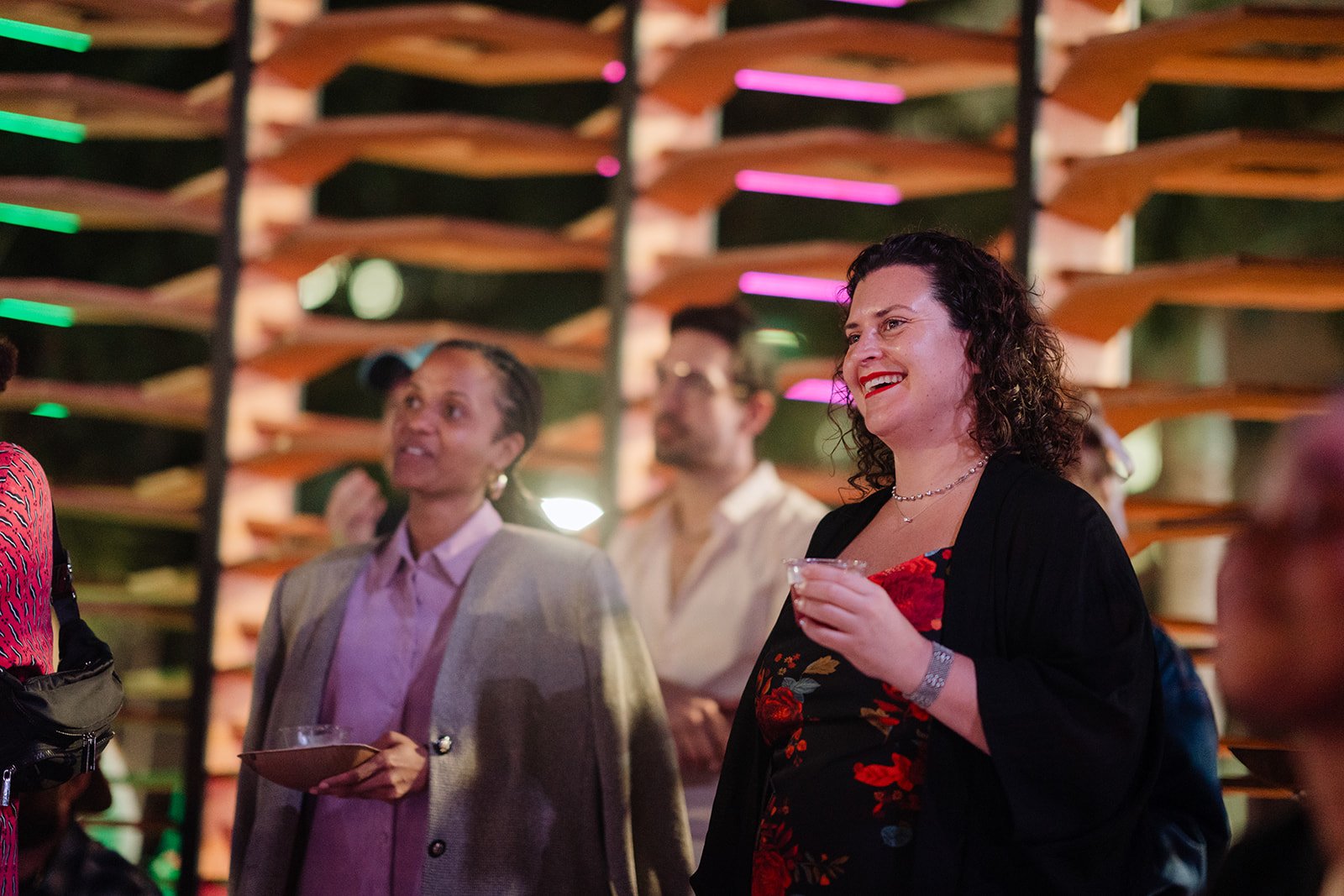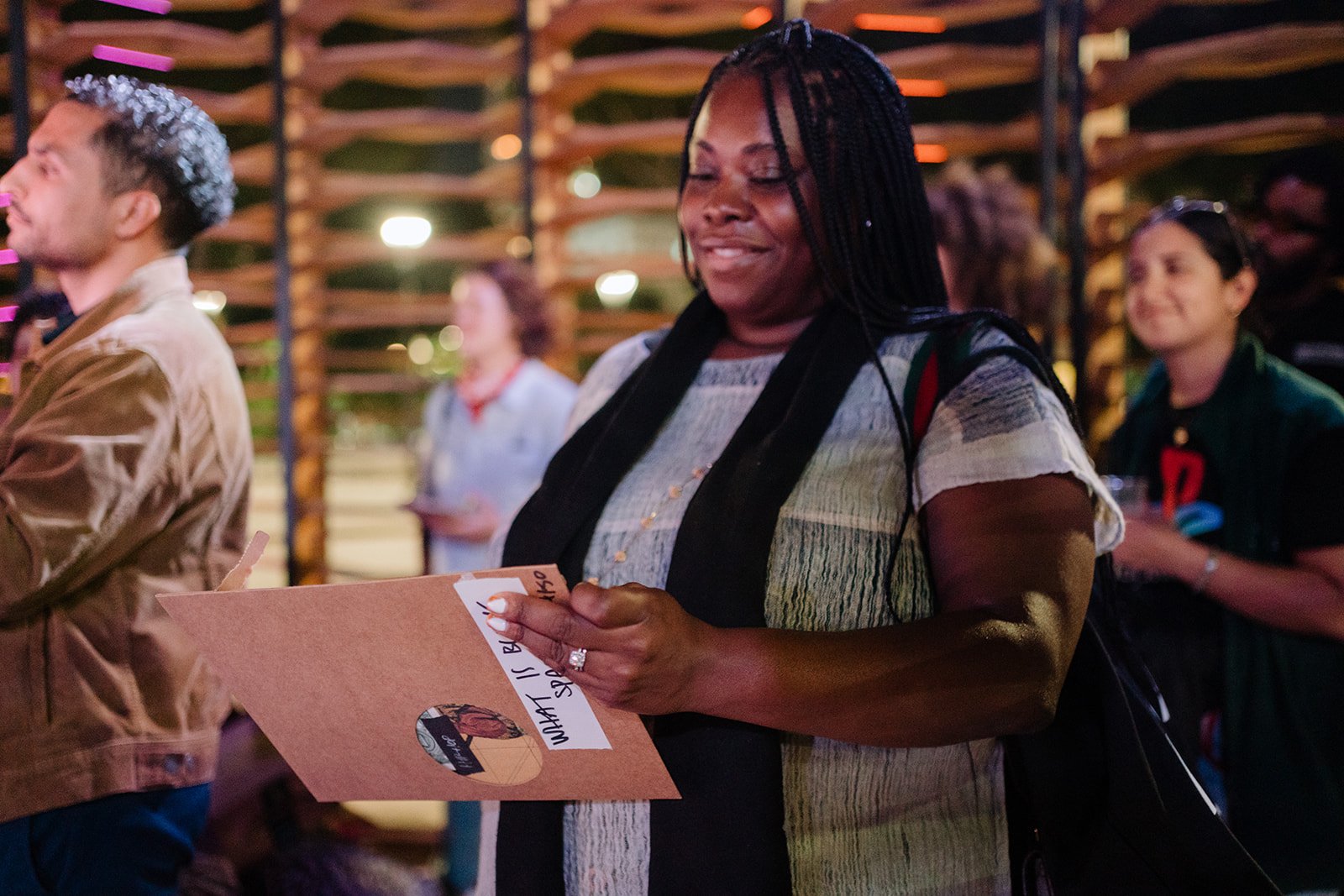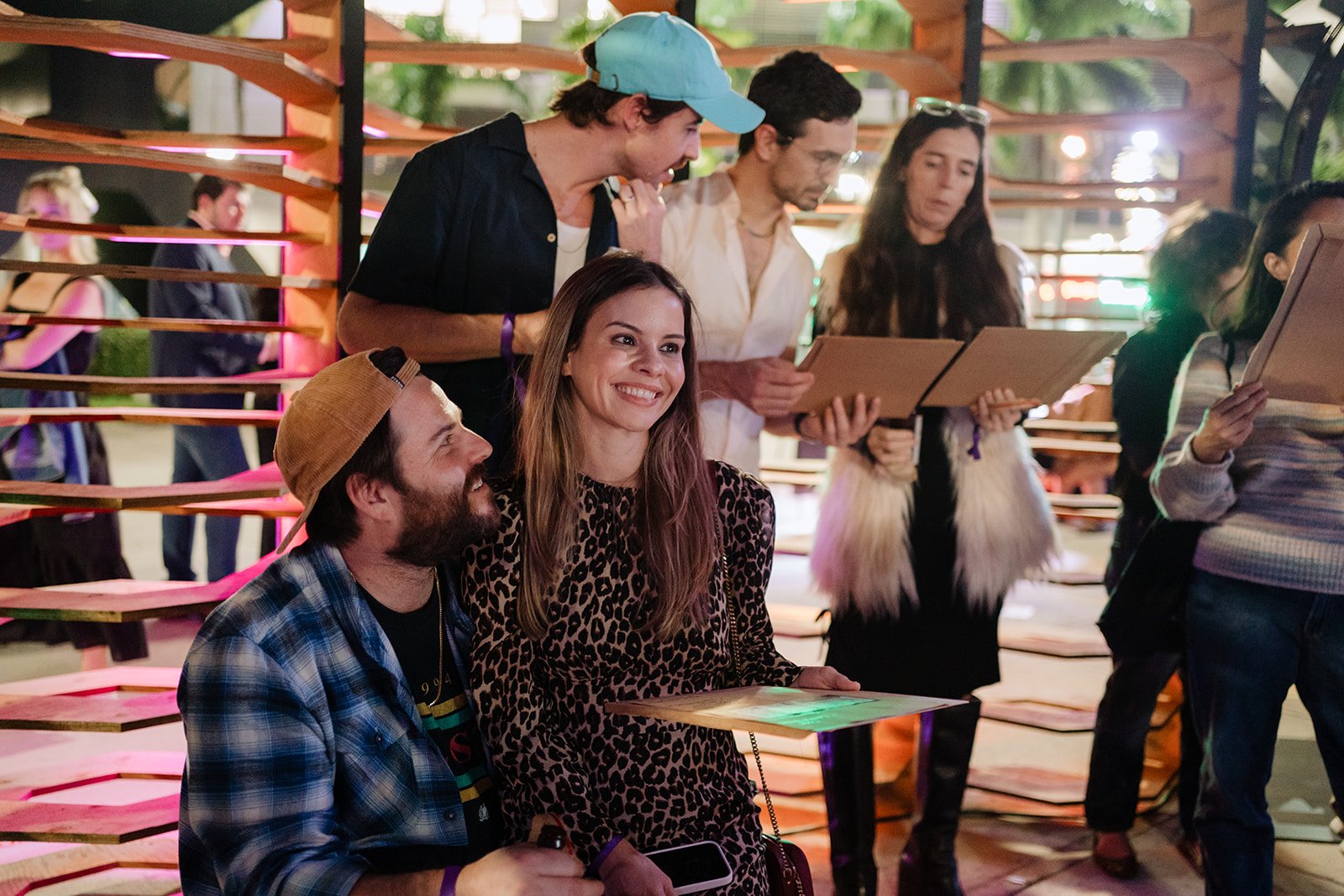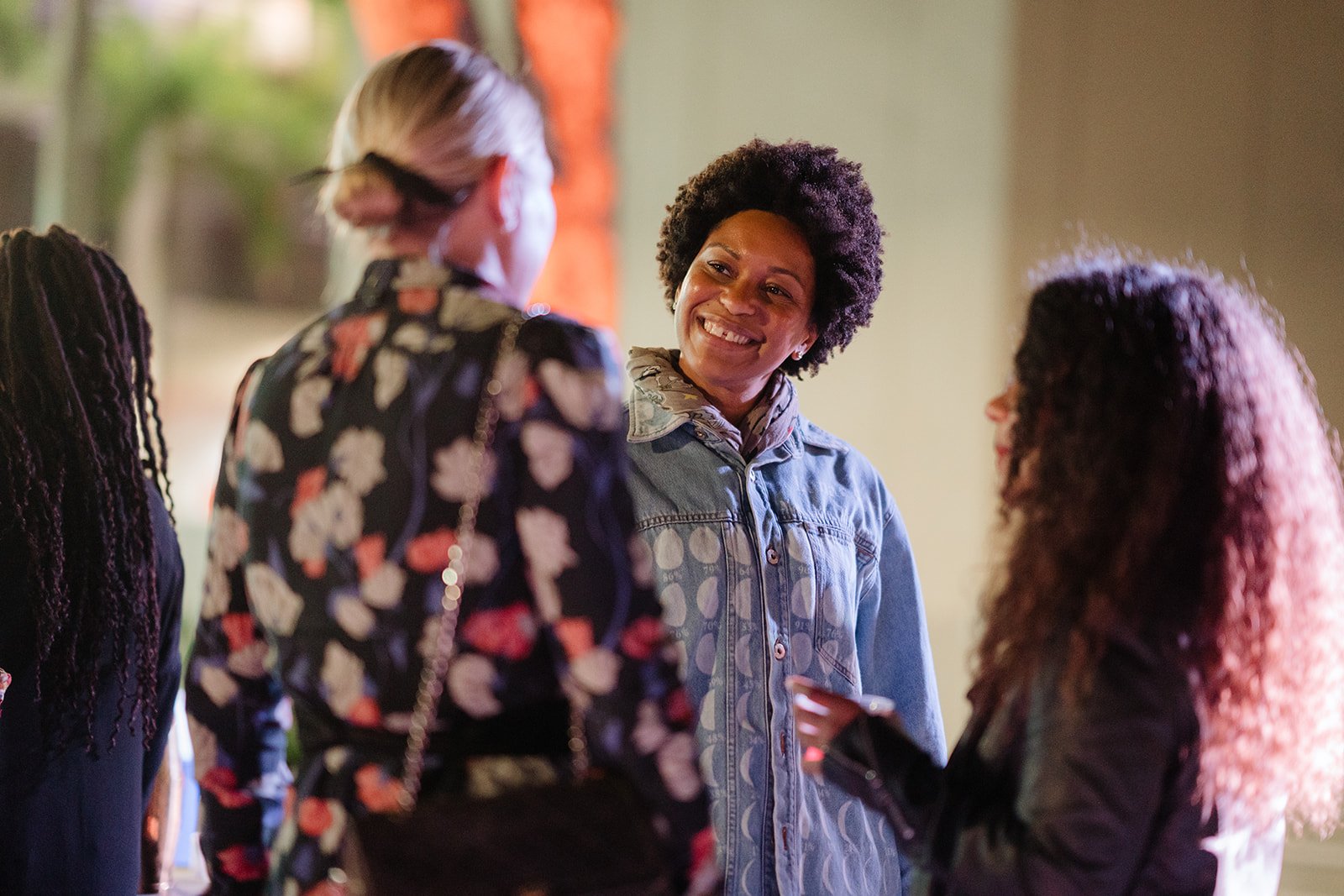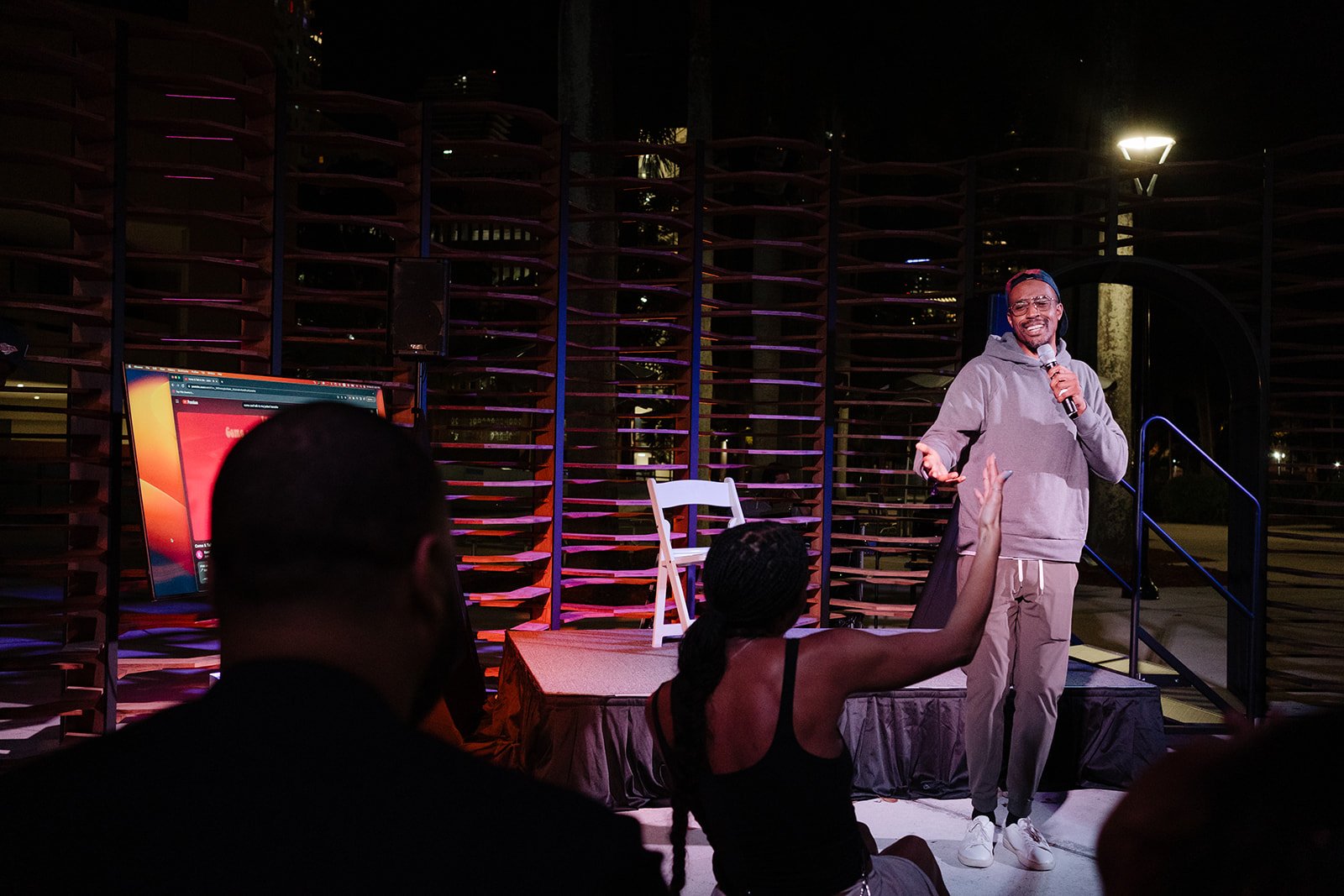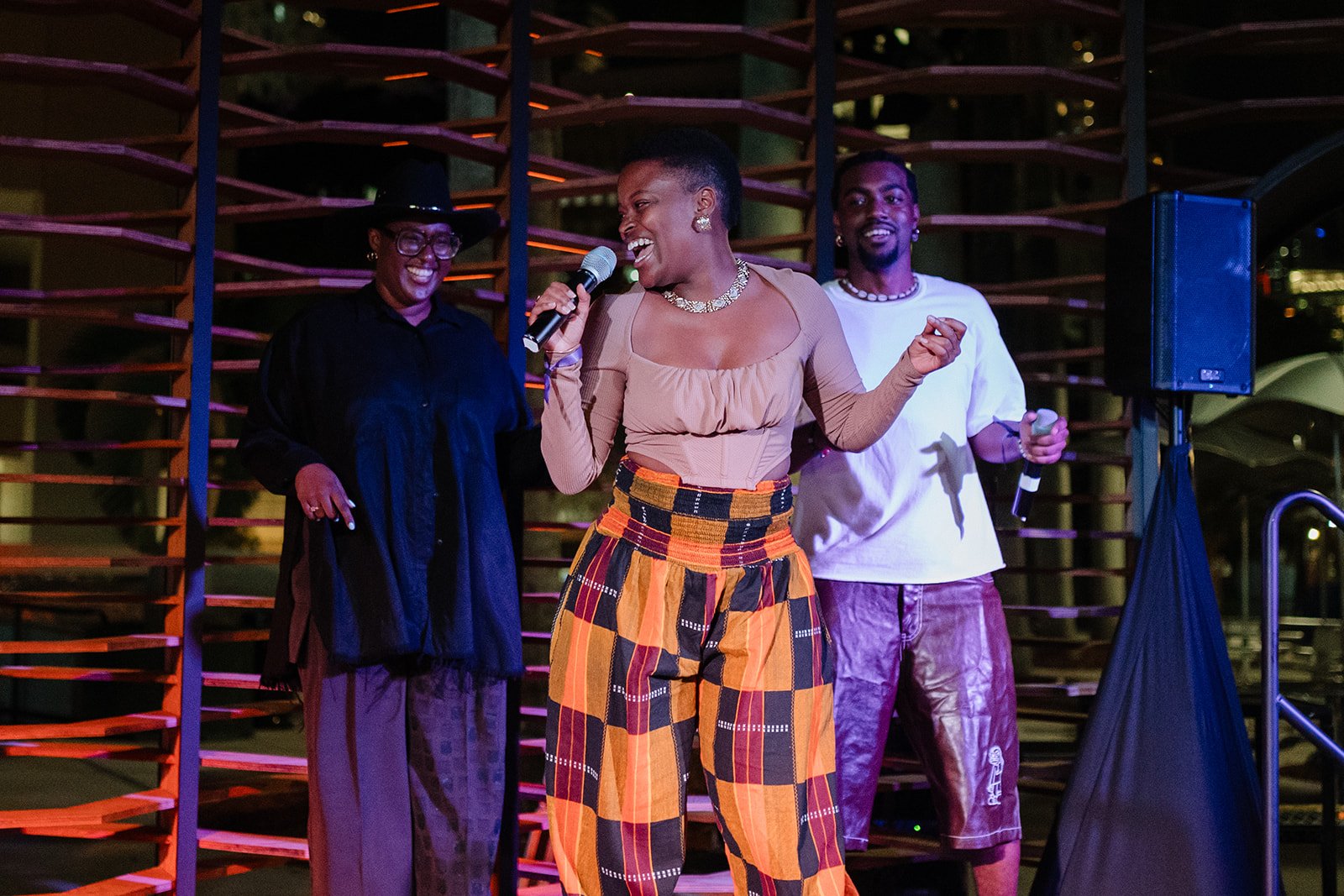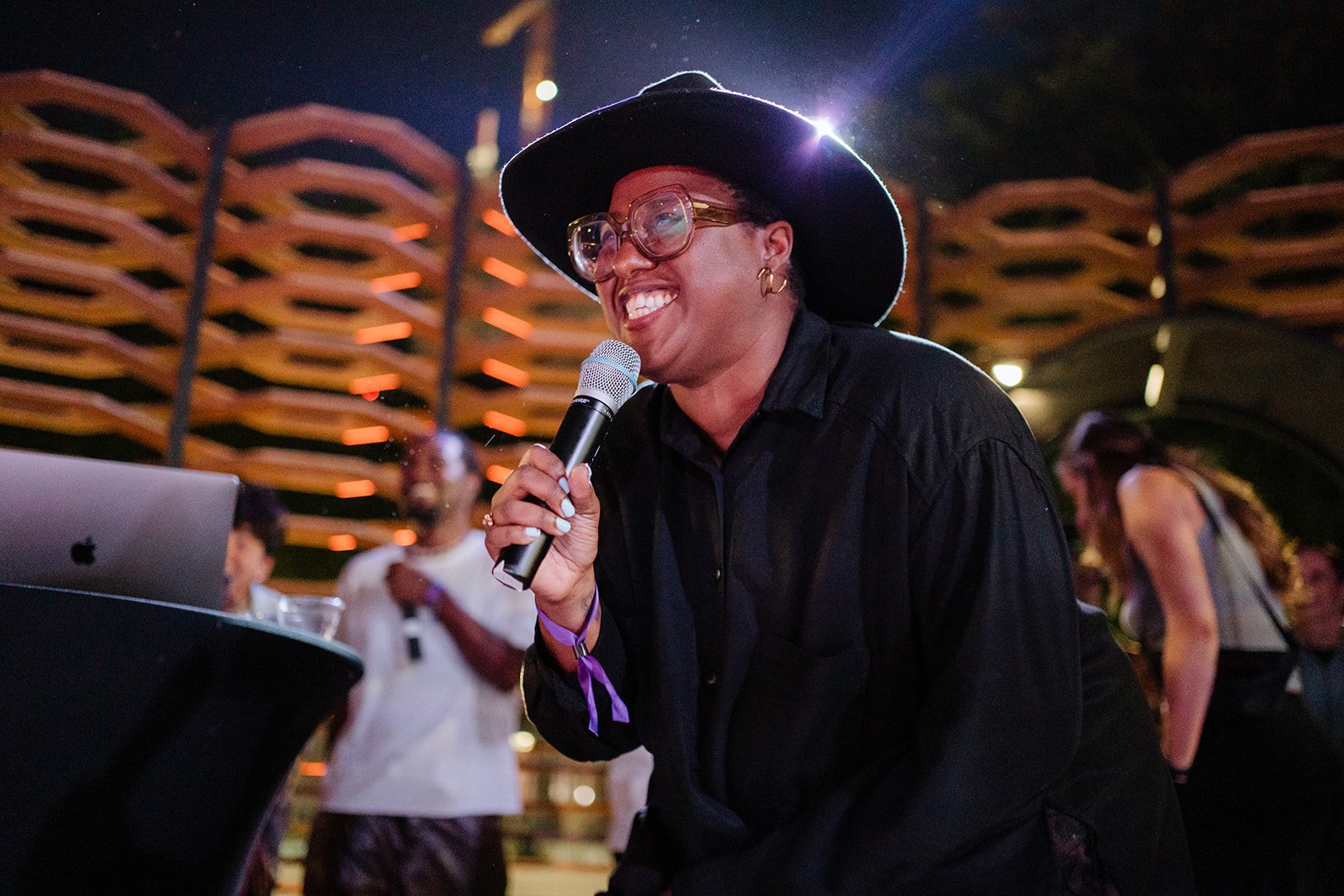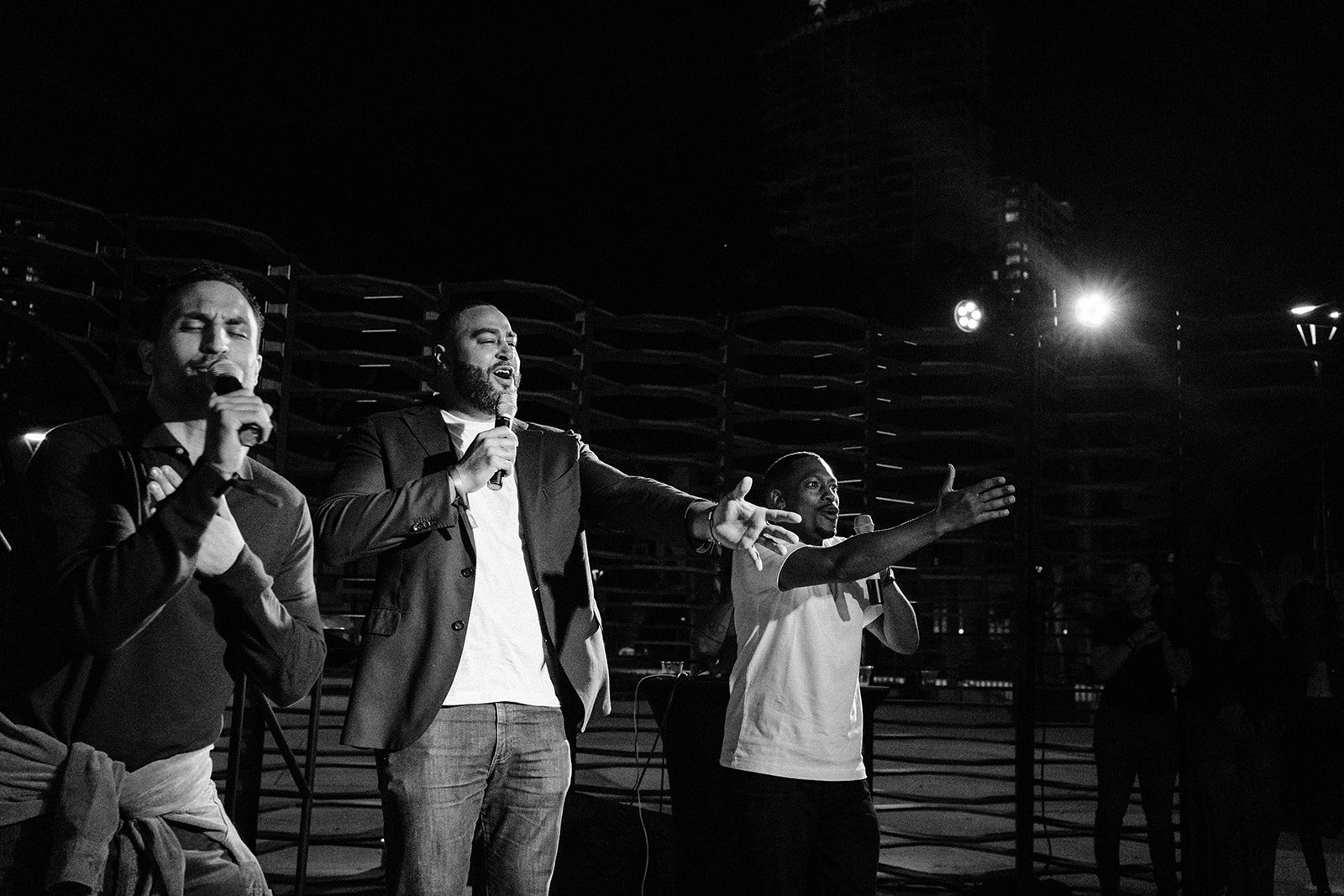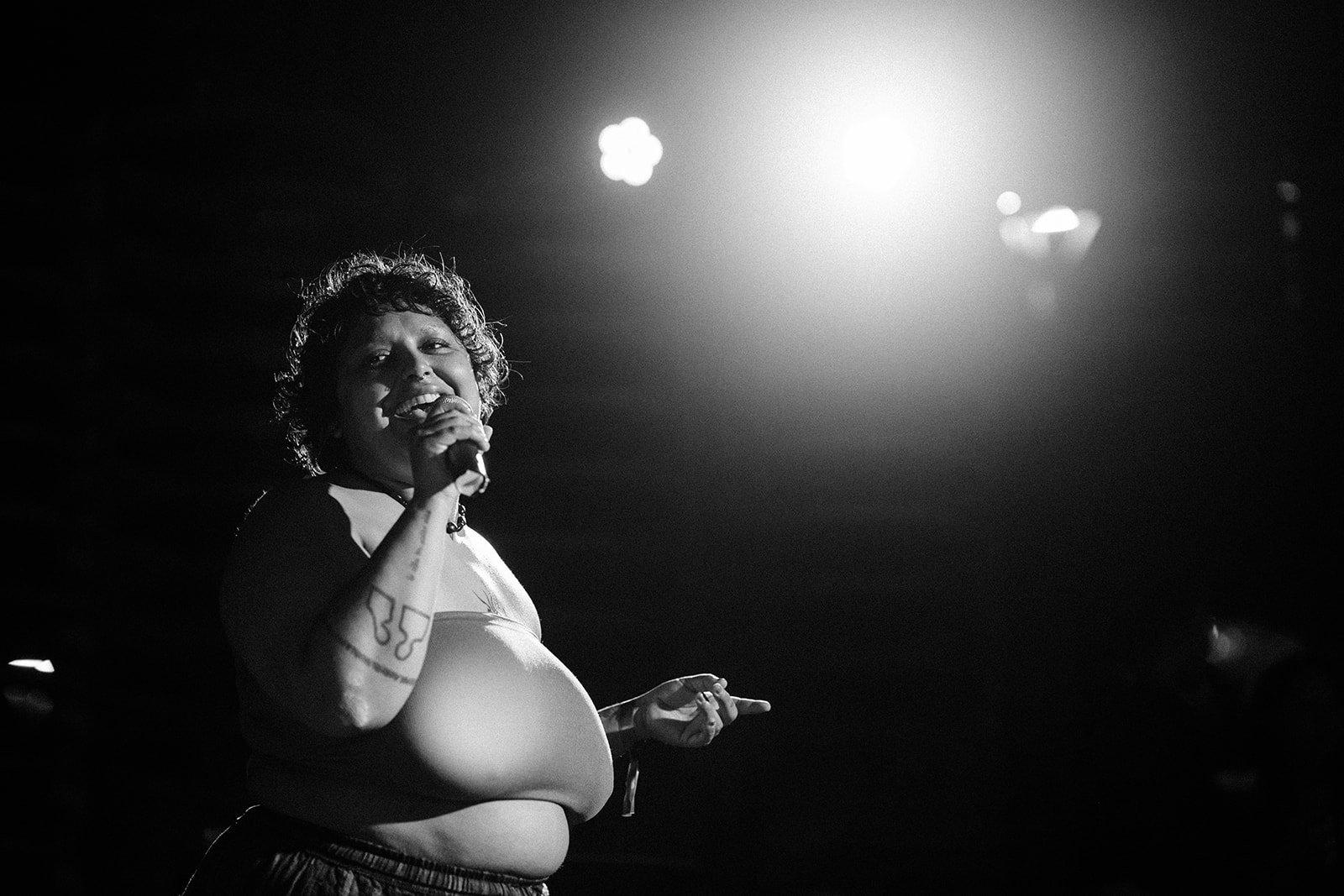What is Black Space?
Germane Barnes does not call himself an artist, even after presenting a series of digital collages at the Museum of Modern Art’s groundbreaking exhibition Reconstructions: Architecture and Blackness in America in 2021, or monumental drawings at the 2023 Venice Architecture Biennale.
On February 28, Germane’s new work for the Commissioner community was unveiled at Miami-Dade College’s Wolfson Campus. Taking place at Ukhamba—an open-air rotunda inspired by South African basket-weaving for which he was commissioned by the Museum of Art and Design at MDC—the night began with a moderated conversation followed by unbridled karaoke.
Here, Germane conceived of the artist as someone who creates because they are compelled, regardless of whether their work serves a practical function or design solution. As a trained architect, he explains that, unlike the artist, he creates to resolve human problems in the built environment. He confessed: the free-flowing unrestricted format of Commissioner stretched the formalism of his practice, so he gave himself a problem—a question or a prompt—to solve: What is Black Space?
What is Black Space?, a series by Germane Barnes for Commissioner.
Identity and Space
For Germane, Black space is fatherhood, Waffle House, water, the ice cream truck, Hip Hop. Twenty-five answers were proposed, all rooted in the lived experience and worldview of the Chicago-born and Miami-based practitioner.
In 2012, Germane was awarded the Thesis Prize at Woodbury University for his project Symbiotic Territories: Architectural Investigations of Race, Identity, and Community. Today, he is the youngest tenured professor at the University of Miami and Founding Director of its Community Housing & Identity Lab. Germane has organized his life’s work around examining the role of race and identity in relation to the politics of space.
Inextricable from his research is how Black people access space when confronted with ongoing erasure, and when, historically and currently, the relationship between homeland, property, and ownership is elusive at best. According to the Joint Center for Housing Studies at Harvard University, “At just 41.7 percent, Black households have the lowest homeownership rate nationally—30.0 percentage points lower than white households. Indeed, Black-white homeownership gaps exceeded 30 percentage points in 37 states, including 10 states where they exceeded 40 percentage points.”
The GI Bill and the New Deal accelerated upward mobility for white Americans while excluding Black Americans from participating in this era of significant wealth creation. More broadly, the U.S. has failed to conduct a truth and reconciliation process that could see reparations as one of several actions to work through, rather than disavow, the hold of slavery on contemporary daily life.
The question becomes more existential than conceptual, a human problem in the built environment: What is Black Space?
When placed side by side, individual works expose a map of historically Black communities in Miami.
Futures
A dollar bill appears as motif on each of the works that Collectors received from the series. Germane muses it’s because “making Black space” is returning what has been taken. Here, the dollar signifies reparations and the exponential futures that may have been achieved in an imagined, revisionist, and more just society.
But this work is not about a dream deferred. In What is Black Space?, Germane holds the pain and the joy, imagination, and possibilities in which Blackness already exists to envelope American culture. Here, his answers to the central question—examples mentioned above such as fatherhood, Waffle House, water, the ice cream truck, Hip Hop–of which there are 25 altogether, generate two mirror images for a total of 50 works. One version features the dollar bill on its face, and the other on its back. When placed side by side, the total body of work exposes a map of historically Black communities in Miami.
Using digital transfer on unique Roman, recycled paper, Germane hand-embellishes each mixed-media collage, complemented by custom sleeves cut by his apprentice team at the University of Miami. Some may recognize the paper from his exhibition at the Venice Biennale. The intentionally fragile paper was sourced from, reclaimed as, and used in hommage to the Black laborers and draftsmen he met during his 2021–2022 residency for the Rome Prize.
Each pairing features one edition with the dollar bill on its face and the other on its back.
Making the Space
During our gathering, Germane challenged Commissioner’s Collector members—the recipients of the work—to seek each other out in finding their pairing and the numbered editions before and after them. Then, with the help of artist and supreme karaoke host Agua Dulce, he invited all guests to lean into the protective circle of the Ukhamba pavilion and sing.
Bellowing under the sky, Germane is organizing us. We are mapping our connections through ritual memory-making and storytelling.
With What is Black Space?, we celebrate a collective and radical aliveness. Traversing histories, geographies, languages, and cultures, Germane, who it seems is in fact compelled to create like an artist, inspires us to build anew together.
Revealing Germane Barnes
Overwhelming gratitude to the generous team at Museum of Art and Design at MDC, to their media services department, artist Agua Dulce, and to our dedicated Commissioner team. Special thanks to Eat Jrk!, New Belgium Brewing, and Tito’s Handmade Vodka. Photos by Chantal Lawrie.






